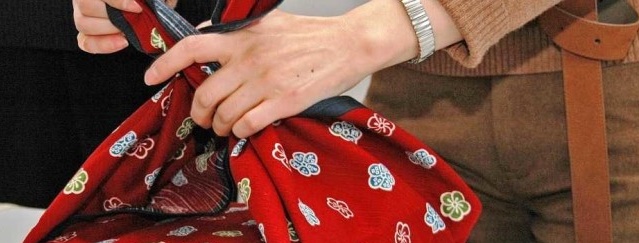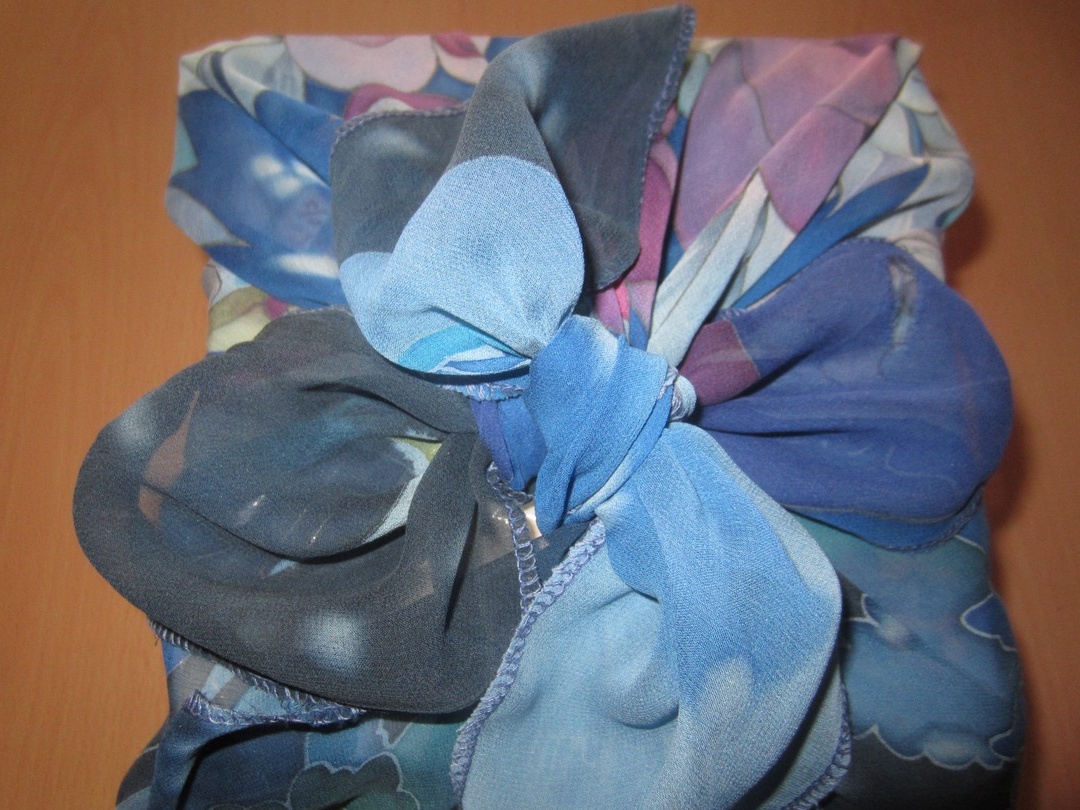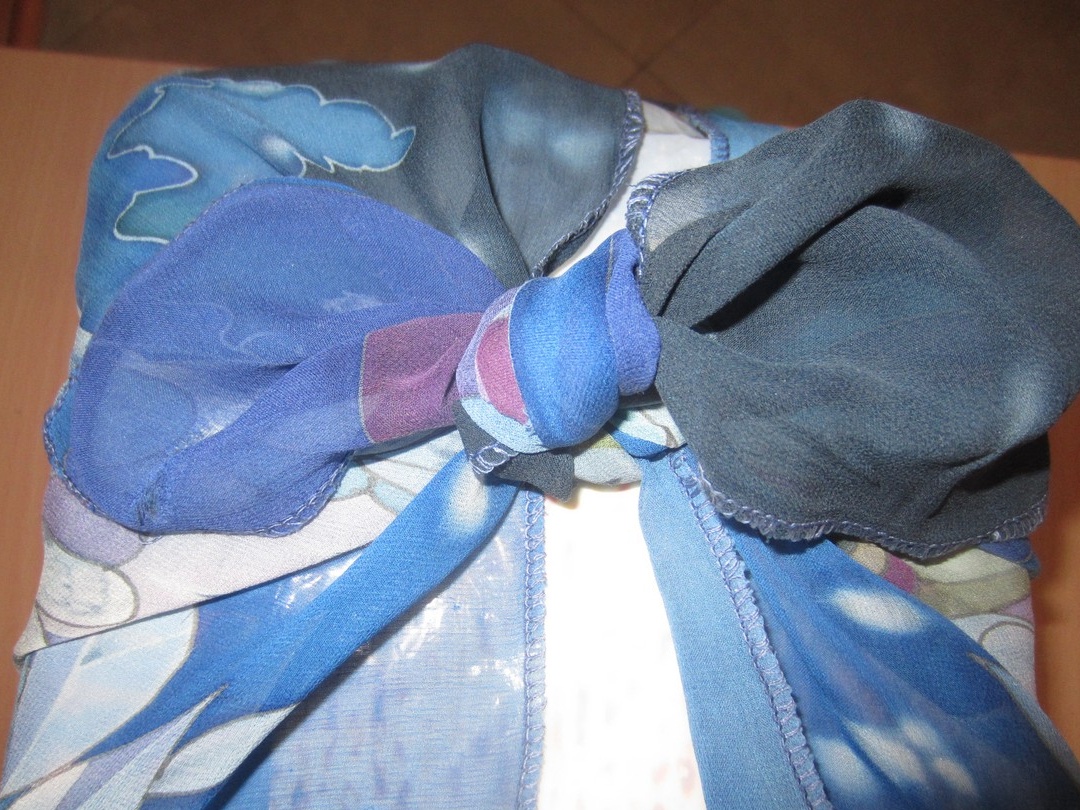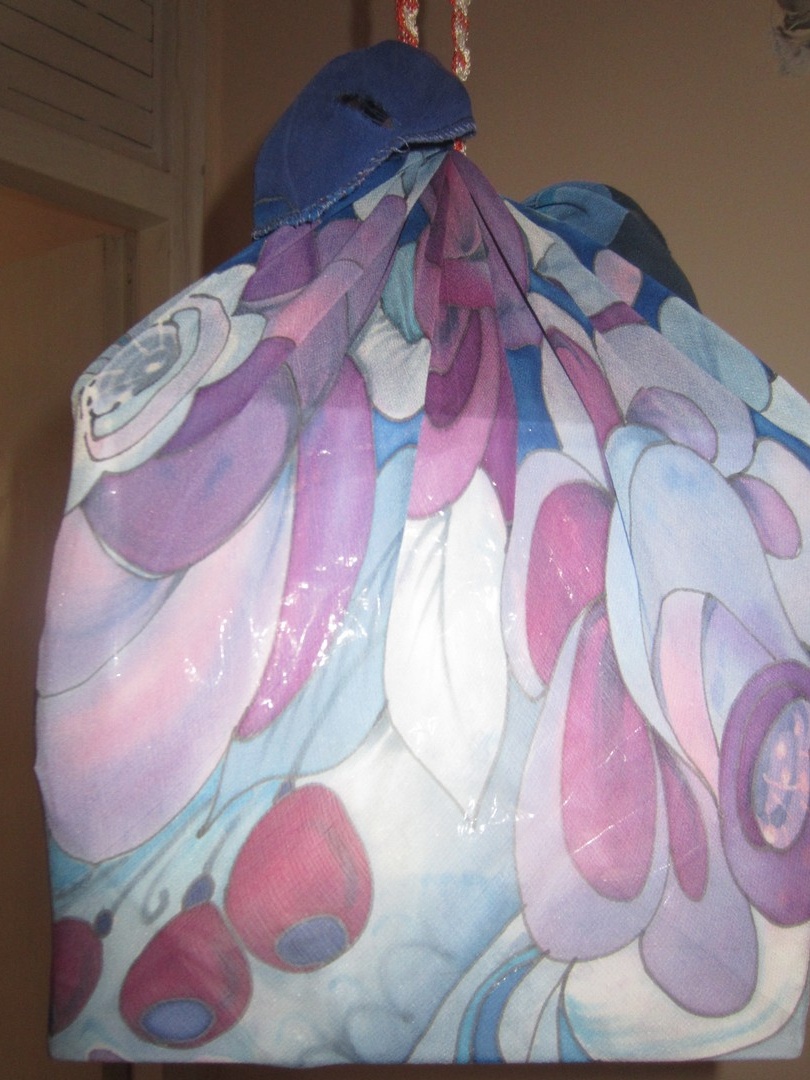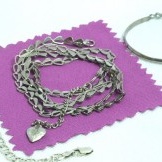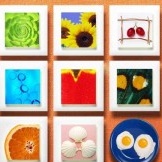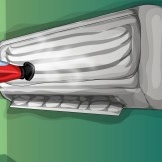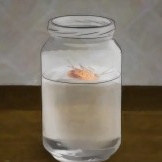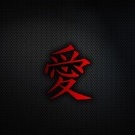Furoshiki or Japanese elegance
The eternal problem: when you need a bag in which you want to put something (for example, a laptop or a book taken to read) - it is never at hand. But at home there is a rack full of bags of all sizes. Throwing away is not environmentally friendly, and we are not used to throwing it away. Take it for processing - for example, I can go two blocks to lower a bag full of bags into a special container, but I suspect that these containers have not been installed everywhere in the vast expanses of Europe and Asia. Fold, as my mother taught, one on top of another, so that they take up less space - there is not enough patience.
What about gift wrapping? Problems always arise - in which box (wrapper, handbag) to put, what to decorate so that it does not look corny, stylish, modern.
Meanwhile, our globe neighbors, the Japanese, long ago solved this problem for themselves by using square pieces of fabric called furoshiki. (It’s wrong to say “Furoshiki”, the Japanese do not say “sushi”, “Sashimi”, or “Mitsubishi”, they don’t really use the “sh” sound.) Simple, elegant, original, and packaging is always at hand.
Furosiki in translation means "bath mat." It would seem: what does the bath have to do with elegant packaging? But the fact is that in the old days in a Japanese bath it was customary to dress in a light kimono (it was called “furo”) and stand with your feet on a “shiki” rug made of several layers of fabric. A man came to the bathhouse with a furo tied into a rug, and after the procedures he tied a wet furo into it.
Modern furoshiki does not have to consist of several layers of fabric, this is at your discretion. And also the standard sizes of the sides of the square packaging (from 40 to 45 cm - small, from 68 to 75 - for larger items) can also increase and decrease as you wish. In furosics, you can tie a small box (then tissue with the size of a handkerchief will be enough) or, say, a large geographical atlas (the fabric for furosiki will be almost the size of a sheet).
Let me emphasize the main advantages of Japanese know-how:
- the scarf, from which the standard-sized furosiki is made, does not require much space, can be folded even into a small handbag;
- such packaging is unusually convenient to carry, because the final stage of packaging in furosics is the construction of the handle, for which it is held, the hand does not sweat, as from a plastic bag;
- goes well with now trendy clothes of oriental, rural or Yankee styles, and if the fabric is elegantly discreet colors or plain - then with a more formal style of clothing;
- It is ideal from the point of view of the same ecology - it is reusable, does not litter the environment, does not need processing, is made in most cases from natural materials (cotton, linen, silk, wool), however, now mixed materials are also used;
- by virtue of all of the above, this is a very modern way of packing purchases, necessary things or gifts.
At first, packaging in furosiki takes some time, you need practice. And then it turns into pleasure!
We need a square piece of fabric trimmed around the edges. It can be an ordinary head scarf, or it can be a piece of fabric that remained unused when sewing a dress (it only needs to be hemmed at the edges). You can also go to the patchwork department of the fabric store, where pieces of fabrics of the most attractive colors are very cheap, which will allow you to get furosics of all colors of the rainbow.
Workouts start better with cotton fabrics. If the nodes are not too tightened, the bundle quickly takes on a decent look. Packaging in silk or crepe fabric requires some skill, which you will do later.After training, you can learn to pack in furosics objects of various shapes: a box with perfume, a bottle of wine, slippers and even a fur hat.
I wish you to quickly master the simple art of creating original furosiki packages!

